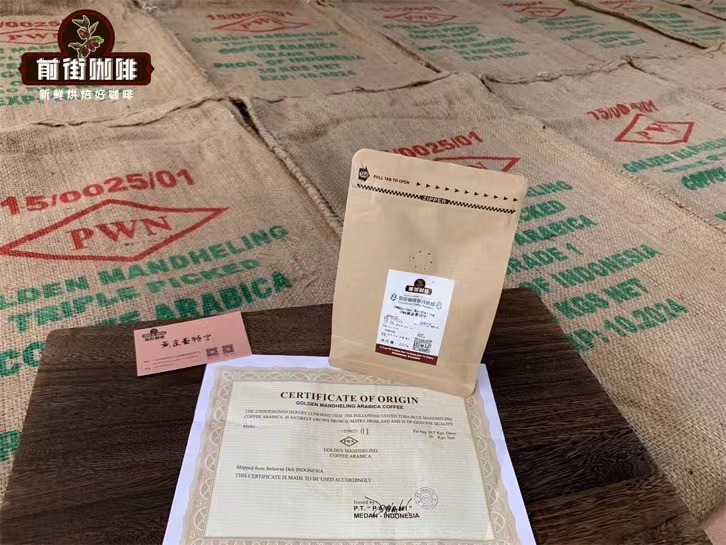What kind of coffee can be called the jewel of Indonesian coffee? Sumatra Mandarin Coffee
Like many other Indonesian islands, Sumatra is formed by volcanic eruptions. The surface of the island is covered with a thick layer of volcanic soil, which is nutritious and extremely fertile, making it very suitable for growing coffee.
A brief History of Indonesian Coffee
At the beginning of the 18th century, the European coffee market was monopolized by Arab growers. The Dutch East India Company is very interested in breaking this monopoly. At the urging of Amsterdam Mayor Nicolaes Witsen, the governor of Batavia in the Netherlands ordered the planting of coffee plantations in the Dutch East Indies, present-day Indonesia. The incredibly fertile soil proved to be the ideal place for coffee, and just a few years later, the first Java coffee arrived in Europe. Coffee cultivation soon spread to other islands, including Sumatra, the second largest island in Indonesia. By the end of the century, the Dutch East Indies had become the world's largest coffee producer, surpassing Ethiopia and Arabia.
The Sumatran coffee trade flourished until the disaster took the form of a disease called rust, which almost completely destroyed coffee plants in Indonesia. To solve this problem, growers have turned to robusta coffee, and today only about 25% of Indonesia's coffee exports are Arabica coffee. One of the most famous Arabica coffee in Sumatra is called Mantlin.
Coffee growing area
Mandheling Coffee comes from the Batak region of west-central Sumatra, near the port of Padang, and grows on the volcanic slopes of Mount Lezel. Plantations are usually located between 2500 and 5000 feet in height. Most plants are Catimor and Typica varieties. Contrary to popular belief, Mantlin is not the name of the region. Unlike other coffees around the world, Mandheling is not named after region, port of origin or other geographical features.
The name comes from a local people, similar to Batak. It consists of two words, mande, which means "mother" and hilang, which means "lost". According to local legend, the name originated during World War II, when a Japanese soldier asked him about his coffee. The coffee shop owner thought the soldier asked him where he came from, so he answered "Mantling". After the war, Japanese soldiers stationed in Sumatra were the first customers, and coffee was exported to Japan under that name and soon spread to other parts of the world.

Sumatra Mandarin Coffee, Indonesia
Most Sumatran (and Indonesia in general) coffee has a unique flavor from a process called Giling Basah or wet grinding. Most growers remove the shell from the beans when the moisture content reaches 12% or 15%. The proportion of Indonesian farmers is 50%. After the mechanical shelling, the beans are dried. The coffee produced by this process is low in acidity, but full-bodied and full-bodied, with a hint of herbaceous flavor, rich earthy tones and a unique chocolate flavor. Other spice notes include cedar, sweet tobacco and spices. Although the acidity is low, it is obvious and consistent and balanced. This iconic flavor is unique to the region, and Mandarin coffee is an excellent example of high-quality coffee in Indonesia.
Important Notice :
前街咖啡 FrontStreet Coffee has moved to new addredd:
FrontStreet Coffee Address: 315,Donghua East Road,GuangZhou
Tel:020 38364473
- Prev

How to judge the quality of coffee beans 6 effective techniques for buying coffee beans
For casual coffee drinkers, deciding which beans to buy can be challenging. Today, there are many brands on the market, because there are also many variables to understand. That's why getting some help about where to start when buying coffee beans can come in handy. Here are the best features to buy
- Next

Is Kenya Coffee the Best? What's the difference between Kenyan coffee and Colombia coffee?
What is Kenya Coffee? Kenya coffee is coffee obtained from the highlands of Kenya. Coffee is known for its rich taste, rich flavor and amazing aroma. Coffee has a slight berry flavor, but its acidity strikes you like a truck. Kenyan coffee is anyone who wants a strong, premium cup of coffee.
Related
- What brand of black coffee is the most authentic and delicious? what are the characteristics of the flavor of the authentic Rose Summer Black Coffee?
- Introduction to the principle and characteristics of the correct use of mocha pot A detailed course of mocha pot brewing coffee is described in five steps.
- Which is better, decaf or regular coffee? how is decaf made?
- How much is a bag of four cat coffee?
- How about four Cat Coffee or Nestle Coffee? why is it a cheap scam?
- Which is better, Yunnan four Cats Coffee or Nestle Coffee? How about cat coffee? is it a fake scam? why is it so cheap?
- How about Cat Coffee? what grade is a hoax? which instant coffee tastes better, four Cat Coffee, Nestle Coffee or G7 coffee?
- Process flow chart of coffee making-Starbucks coffee making process what coffee tastes good at Starbucks
- The top ten best coffee beans in the world Rose summer coffee or Tanzanian coffee tastes good
- Yunnan four cat coffee is good to drink?_four cat coffee is a big brand? four cat blue mountain coffee is fake?

